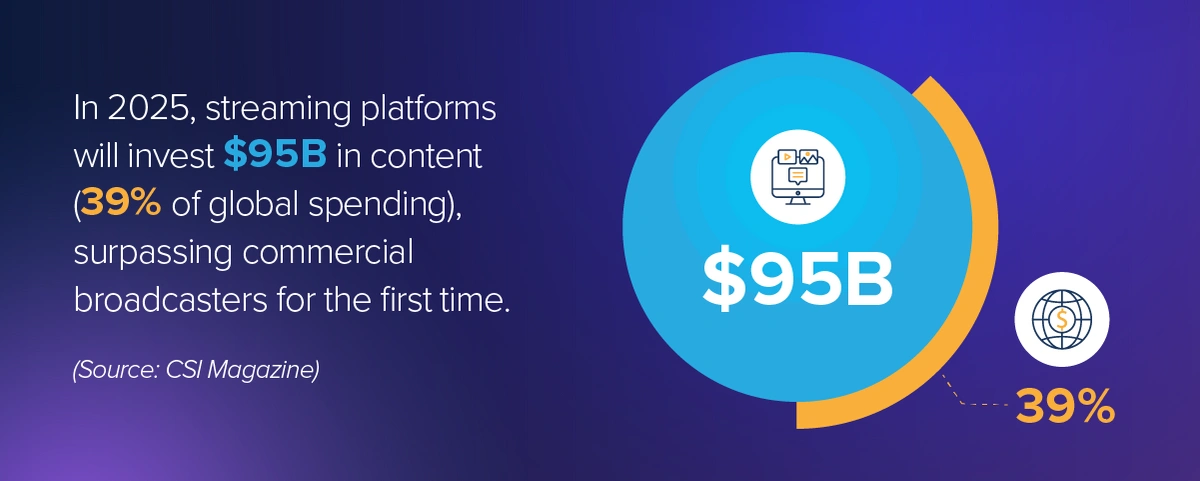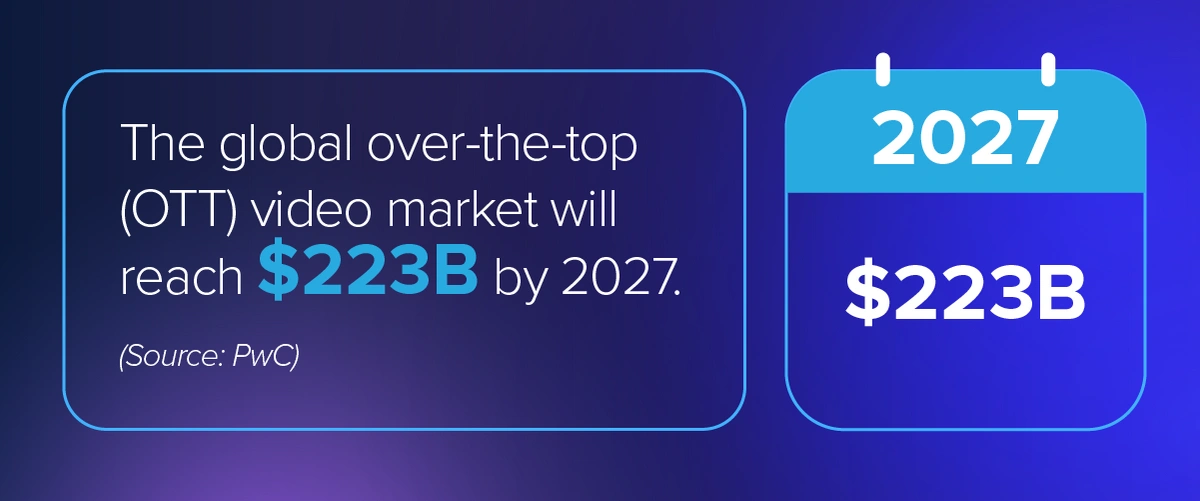
DATA BEATS GOLIATH
How media content owners level the IP playing field in the face of streaming consolidation
In today's media landscape, content creators and production companies face their own Goliaths — mighty streaming giants that dominate the industry. But in this modern underdog story, the secret weapon is data, not a sling and stone.
Some years ago, licensing content was more straightforward: Create something valuable, exploit it as widely as possible to the highest bidders and move on to the next project; alternatively, secure large output deals that combine tentpoles with library content. Today, the rules have completely changed.
Seven companies now dominate global content consumption. Netflix currently leads with 301 million global subscribers, followed by Prime Video (205M), Disney+ (124.6M), Max/Discovery (116.9M), Paramount+/SkyShowtime (77.5M), Hulu (51.1M) and Peacock (41M). These media giants now dictate how content is consumed and how producers and distributors survive.
What was once a relatively straightforward process evolved into a strategic game of data and savvy maneuvering with higher stakes than ever. Navigating this ecosystem requires a new approach with innovative tools to maximize intellectual property (IP) value.
High-value content still commands significant license fees for exclusive rights in the lucrative “Pay-One” window (immediately after theatrical release). For lower-value content, the traditional volume game has seen larger non-exclusives or revenue share deals with AVOD (advertising video-on-demand) and FVOD (free video-on-demand) services.
Content owners can use the competition between platforms to improve these deals, but must go further to extract full value from their IP.
4 challenges in the consolidated streaming era
As platforms consolidate, 4 key challenges redefine traditional licensing:
- Uneven bargaining power
Now that platforms are truly global and reach hundreds of millions of people, they are keen on licensing terms. Smaller content creators often struggle to negotiate favorable agreements, creating a significant power imbalance. The industry giants flex their muscles, while independents and smaller studios search for leverage. - Diverse streaming business models
Streamers used to pride themselves on simple customer pricing and exploit a single right, typically SVOD (subscription video-on-demand). Subscription fatigue, changing viewing habits and churn have expanded the AVOD and FAST (free ad-supported streaming television) markets. Competition from social video platforms has increased the importance of clips and short-form.
Managing these diverse rights across territories has become increasingly complex, requiring sophisticated tracking systems to ensure compliance and avoid costly oversights. - The value in the mix
Pure-play streamers like Netflix and Prime Video have alternated between acquired content and self-produced originals. Broadcasters and studios with newer streaming offerings have sought to balance the value of own-brand D2C and lucrative sublicensing. Ultimately, all platforms want a mix of breadth and depth, and those looking for licensing deals must pitch accordingly. - Windows of opportunity
Studios and platforms have been increasingly creative in tweaking the typical windowing strategies by shortening Pay-One, agreeing to second windows, doing co-exclusives or offering early access to premium subscribers. Data-driven revenue optimization is at the heart of this creativity.
Technology: The great equalizer
In an environment dominated by streaming giants, data-driven solutions and technology level the playing field. I believe modern content owners must embrace these critical capabilities:
- Real-time market trend analysis
Analyze market trends, audience preferences and content performance history to negotiate more effectively and identify where content will likely perform best. Your buyers are already doing this, and knowledge becomes your first line of defense. - Predictive revenue modeling
Apply machine learning to forecast financial outcomes across different licensing scenarios, guiding smarter decisions that maximize each opportunity’s value. Consider your brand’s profit potential across all possible exploitation methods. - Automated rights tracking
Maintain real-time visibility into content usage across platforms and territories, ensuring compliance, reducing risk and securing payment for every IP use. In a complex ecosystem, oversight equals lost revenue. - Comprehensive agreement performance monitoring
Continuously evaluate deal performance, track revenue streams and identify discrepancies requiring renegotiation. The battle doesn’t end when the contract is signed.
Turn complexity into a competitive advantage
In the streaming consolidation era, the content owners winning in this new landscape share 3 behaviors:
- Seeing the whole board with comprehensive market data and reporting capabilities across the entire content ecosystem.
- Implementing micro-strategies by content type and adjusting windows, pricing and deal terms with agility and precision.
- Using data, not instinct, for tactical decision-making in every detail of every deal.
What separates leaders from laggards isn’t size or content quality. It’s adaptability powered by intelligence.
The power shift
Those seven companies that now largely control how the world consumes content still need content creators, storytellers and rightsholders. Without the IP, their platforms are empty vessels searching for value.
You can protect and grow your IP value by embracing technology, optimizing licensing agreements and staying flexible in this shifting market. Successful content monetization requires leveraging data, negotiating smarter and adapting to the complexities of a consolidated streaming world.
Success doesn’t come from matching the giants’ size. I believe it comes from strategic precision, market intelligence and the confidence that comes with data-driven decisions.
Will you enter the negotiation room as an equal player armed with the power of data at your fingertips that can level the playing field?
For more information on streaming consolidation, take the Media Industry Journey.
Get the latest news, updates, and exclusive insights from Vistex delivered straight to your inbox. Don’t miss out—opt in now and be the first to know!




